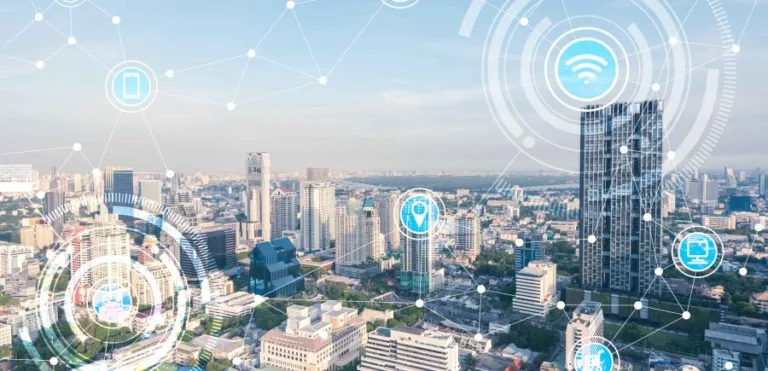
Viewpoint and perspectives on BIM
Reading time: 5 minutes
BIM (Building Information Modeling) is taking root in the construction world. Even if it concerns rather the big programs, the projects realized in BIM are more and more numerous.
The benefits of such an approach for construction are now commonly accepted, practices are becoming more refined and the job of BIM manager is becoming a more common reality.
There is still a lot to be done, however, especially for a better integration of the finishing trades and particularly the electricians, but overall the process has been launched and from year to year, we see significant progress.
And yet, the construction part represents only a minimal part of the complete cost of a building. Over a 20-year lifespan, which is relatively short for a building, the cost of construction is finally only about 25% of the total cost.
In this article:
Integrate building operations from the construction phase
It is quite paradoxical to note that a building, still today, is almost never delivered with the systems that will allow it to be operated such as a BMS (Building Management System) or a CMMS (Computerized Maintenance Management System). This is even more rarely the case for the integration of asset management and energy management systems.
However, these costs are minimal compared to the construction costs. It is therefore up to the operator, whose investment budgets are usually reduced to a minimum, to select and install such systems.
Paradoxically, they are essential to ensure the proper operation of buildings and to limit their operating costs over the long term.
Over decades of operation, the return on investment of these solutions is considerable, as owners have long understood.
Why not provide, from the construction phase, the tools that will enable the building to be managed efficiently and at the lowest possible cost?
Today, a lot of data is available in the different BIM models that are delivered with the building.
However, it must be noted that everything is manually retyped and this takes months. What a mess!
Of course the professions of architects, builders, installers, maintainers, operators, managers and their concerns are different, but today can we ignore this continuity from one profession to another?
Ensure the digital continuity of building data throughout its life cycle
Driven by the digital transformation in other sectors, an awareness is fortunately emerging.
It is now understood that it is essential to ensure the digital continuity of building data throughout its life cycle. This is becoming an essential issue for owners and builders for two environmental reasons:
- provide for environmentally friendly operation from the design stage of the building
- provide for the conditions of recycling of materials used during construction, development and end-of-life or rehabilitation.
Thus, the various stakeholders will be involved and made responsible for the entire life cycle.
It is clear that the digital twin of the building will become an essential data for its good management and that all actors will have an interest in its development and enrichment over time.
The digital twin or twins?
They have different concerns and an architect, builder and their subcontractors do not need the same data as an operator or owner.
It is therefore appropriate :
- to provide each person with the data that will be useful in his or her work context and/or intervention,
- orchestrate this data intelligently across the various proprietary systems throughout the building's life cycle.
Thus logically, the data related to plans, rooms and surfaces, etc. are rather the prerogative of the asset management application while those concerning equipment are rather managed in CMMS.
Nevertheless, a BMS needs to have in its operational configuration up-to-date information on the equipment, as well as on its precise location, while the person who will have to work on the equipment will also want to have this information, as well as the technical manual, the maintenance range, etc.
The owner is looking for financial and patrimonial information about his building, the uses made of it, the regulatory data, etc.
It is clear that the same data can have very different uses and that it is essential that they be reliable and up-to-date.

Orchestrate data to make it useful and enrich it
For this, beyond the vertical business applications, it is necessary to have a platform that allows the proper exchange of data between all applications.
This ability of the systems to interact with each other allows for the enrichment of data in the field and eventually their transmission to specialized applications such as virtual or augmented reality. The use of this type of application can be very useful in certain circumstances and for certain professions: training to intervene in sensitive environments, security, support in complex tasks, etc.
Thus the keystone is the quality of the data and its good "circulation" or "attribution".
Exploiting building data over time
Finally, we will not neglect a last strategic aspect which is, as in the industry, the exploitation of data over time, through systems of theBig Data or Artificial Intelligence type.
These self-learning technologies will allow, over time, to draw particular lessons, with high added value, on the life of the building.
These are predictive systems that are able to anticipate problems, breakdowns or plan maintenance investments as accurately as possible.
In this field, we are only at the beginning, but the potential gains and benefits for the building industry are such that its development should be exponential in the coming years.
Thus, we can become aware of the stakes involved in this digital continuity, of the considerable returns and benefits that can be derived from it, and also of the importance of planning an open and communicating IT architecture.
This should be done as early as possible. The tools and technologies exist and are available!
The digital transformation of the building industry is underway, and it has more surprises in store for us.
- article originally written on November 4, 2020, updated on April 11, 2023 -
Vision by Algo'tech is a No-Code platform for creating professional applications, all in one.
Create your mobile & desktop user interfaces + the database that feeds them + the processes to guide the user through the application + the API connections.
The platform also offers you to host your creations in a centralized space to manage multiple applications, users and their rights.


